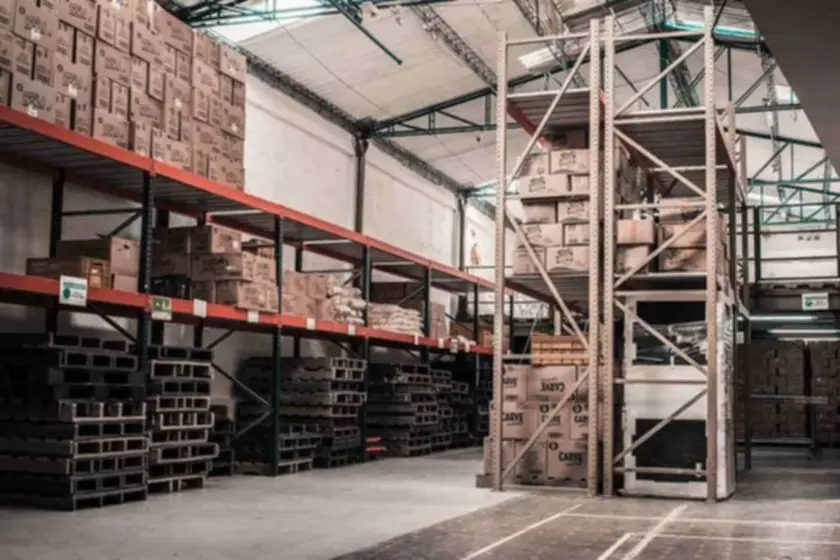The improvement of intelligent software entails imitating several capabilities, together with reasoning, learning, problem-solving, notion, and information representation. AI applied sciences provide producers with priceless tools to boost predictive upkeep and equipment inspection processes. Furthermore, many producers are doubtful about the capabilities of AI-based options when it comes to the accuracy of the maintenance and inspection processes. Given these circumstances, it might be somewhat difficult to influence producers and help them grasp the cost-effectiveness, effectiveness, and safety of AI-based options. Nevertheless, manufacturers are now increasingly accepting the potential benefits of AI-based options and the spectrum of functions they serve.
- The Chinese government has introduced a number of legislative proposals and public feedback in order to integrate AI into the manufacturing sector.
- Further, AI evaluates all the elements introduced on the configuration floor and compares them with a number of other photographs of the same part within milliseconds.
- For instance, the Society 5.0 initiative by the Japanese government to make the most of digital applied sciences such as huge information analytics, AI, the Internet of Things (IoT), and robotics throughout numerous sectors in the economy.
By Offering Analysis

As the prices of cloud storage and processing and prepackaged instruments decrease, AI is becoming more accessible for organizations, serving to them improve effectivity, yield, and margins. For instance, our shopper, a worldwide producer of heavy building and mining tools, faced challenges with a decentralized supply chain, leading to increased transportation prices and handbook data decision. To tackle this, we developed a data-driven logistics and supply chain administration system using AI-powered Robotic Course Of Automation (RPA) and analytics. The RPA bots automated manual processes, resolving errors and enhancing provide chain visibility by 60%, in the end bettering operational effectivity by 30%. This system allows GE to observe tools health, predict when machines want fixing, and make their production lines smoother. The Predix platform helps GE reduce downtime and increase manufacturing unit efficiency through knowledge analysis and machine learning.

Today, a quantity of firms have started integrated AI powered predictive upkeep that uses AI and machine learning algorithms to predict when tools or machines are likely to fail, allowing them to get them mounted just in time. The Center East & Africa have been witnessing important progress in manufacturing industries. In middle east and Africa international locations similar to UAE, Egypt, and Saudi Arabia have been investing heavily in their economies. This is amongst the primary elements which is strengthening the manufacturing sector in the area. The Gulf Cooperation Council’s manufacturing industry has been making significant advances owing to the improved know-how acquisition and integration of advanced know-how in the manufacturing sector. The market research report presents an in-depth analysis of the trade to help informed decision-making.
High Upfront Prices For Implementation
Not Like traditional strategies, where it used to take weeks and even months to develop a prototype, generative design can create multiple variations in minutes. And not simply this, the software learns from each iteration and uses that data to come up with even better options. This method helps manufacturers scale back costs, velocity up product improvement cycles and produce lighter yet stronger components. It all started in 1961, when the primary industrial robot, Unimate, shook the entire manufacturing industry and shaped it in the direction of automation. Today, in an identical sample, manufacturing industries have introduced artificial intelligence (AI) to automate their processes. The artificial intelligence in manufacturing sector reveals a fragmented landscape, and competition is expected to intensify because of the active participation of quite a few players.
In Accordance to the report of Microsoft Company in 2019, 15% of businesses are at present leveraging AI and 31% of companies are planning to implement an clever system over subsequent year. This outstanding technological advancement of industry four.0 has created extra demand for synthetic intelligence in manufacturing market. Many industries are closely investing in constructing good factories to enhance the manufacturing. One of the necessary thing advantages of artificial intelligence in manufacturing for brand new product development is the flexibility to investigate huge quantities of information shortly and effectively.
The growth trend is chiefly pushed by the requirement to manage increasingly intricate datasets and the advancements in machine learning algorithms and data analytics within the manufacturing sector. Based on Technology, the AI in Manufacturing Market has been segmented into Machine Learning AI Software Development Company (ML), Pc Vision, Natural Language Processing (NLP), Context-Aware Computing, Machine Reasoning and Deep Studying. By expertise, Machine Studying (ML) accounted for the most important market share with a market worth of USD 780.4 million in 2023, which is projected to grow at a CAGR of 26.3% during the forecast period.
Synthetic Intelligence In Manufacturing Market Segmentation
In Addition To, having less information on whether AI can fully manage the work is holding the manufacturers again owing to much less utilization of AI’s potential. Thus, addressing the options of AI and re-training the professionals is the need of the hour. This is holding the managers to totally adopt the technology and thereby hampering the adoption of AI in manufacturing. In 2023, the market was valued at $5.07 billion, and it is forecasted to achieve $68.36 billion by 2032, with a compound annual development fee (CAGR) of 33.5%. This growth displays the industry’s growing reliance on AI-driven tools for automating manufacturing strains, predictive upkeep, and optimizing resource allocation.
Metals & heavy equipment comprise the production of different machinery utilized in construction, infrastructure development, and manufacturing functions. Implementing AI within the metals & heavy equipment trade might help manufacturers analyze machine conditions in advance to keep away from unplanned downtime and wastage. Additionally, AI options exhibit predictive upkeep capabilities that assist the business players save time and value. Subject companies are used to collect and sense different information similar to warmth, sound, mild, odor, and eddy current. The collected information is distributed to operators to investigate and take motion based on the scenario within the plant. Producers are witnessing the necessity for manufacturing optimization in industries corresponding to chemical, automotive, semiconductor & electronics, amongst others on a big scale.
Generative design is an AI-powered process the place computers create completely different design options based mostly on set targets and guidelines. Engineers enter their needs, corresponding to weight, materials, and price limits, and AI suggests multiple designs. “Eventually, such systems could show to be incredibly valuable to customers, creators and advertisers and across enterprises,” said Melissa Knox, World Head of Software Program Banking. Software Program executives spoke about their present use of AI for productiveness features in advertising and engineering and their longer-term prospects to achieve market share in an agentic computing future. These companies are aiming to create massive techniques that deploy AI agents to make choices, take autonomous actions and adapt to altering environments for real-world applications across industries.
Executives also highlighted the “data lakehouse revolution”—a trend to create unified data platforms that combine data lakes’ low-cost storage and adaptability with information warehouses’ structure and administration options. Executives described sturdy capital expenditures on commercial cloud servers and expanding their AI choices to enhance AI reasoning, in addition to creating specialized functions and progress toward agentic AI. They spoke about offsetting prices with customizable chips that optimize compute performance and focusing on long-term utilization of their land and building sites. They additionally addressed recent developments in AI that improve computing efficiency as optimistic for his or her companies, because it helps scale back prices and increase AI demand. A. The market for artificial intelligence in manufacturing was pegged at $2.3 billion in 2022 and is anticipated to succeed in $16.three billion by 2027, increasing at a CAGR of 47.9% over this era.
The swift improvement, testing, and deployment capabilities inherent in software program enable rapid implementation—a crucial benefit in the manufacturing panorama. This adaptability proves indispensable in an business that necessitates immediate responses to fluctuations in AI in the manufacturing market and technological advancements. Furthermore, software integration into current industrial equipment and workflows is notably simple and seamless. Manufacturers use this know-how to monitor machine efficiency, predict maintenance wants, control product quality, and optimize production strains. By using AI options for manufacturing, factories are not only meeting present production demands however are additionally preparing for a future the place technology and human skills work facet by side.
Nevertheless, as the pandemic situation is under control to some extent, the demand for AI is prone to develop significantly. Giant enterprises and SMEs are likely to invest in this expertise to spice up their manufacturing process. During these unprecedented times, managing people and taking the best decision has turn into all of the more critical.
The proliferation of IoT units additionally aids in knowledge gathering and integration, allowing manufacturers to effectively leverage AI capabilities. Additionally, the rising client demand for custom-made merchandise requires adaptable manufacturing methods, achievable via AI-driven methodologies. Lastly, adherence to rigorous regulatory standards and the need for sustainable production practices are further factors driving corporations to incorporate AI solutions into their workflows. Because of its crucial operate in improving information analytics and operational effectivity, the software program is anticipated to dominate the global artificial intelligence (AI) in manufacturing market. Producers could enhance supply chain management, forecast maintenance necessities, and optimize manufacturing processes with the utilization of AI software systems’ real-time decision-making capabilities. As industries continue to adopt automation and integrated digital techniques, the demand for AI-driven software program is skyrocketing.
Artificial intelligence and machine studying are highly effective tools to attenuate the consumption of sources and vitality in each industrial course of. Manufacturing companies are using these technological models to optimize energy consumption and resources. The developments of synthetic intelligence (AI) and machine studying (ML) have opened new horizons for manufacturing optimization. AI and ML assist to construct a statistical mannequin using the available knowledge from many sources such as a reading of many sensors, initial materials used for manufacturing, and more. Based on this knowledge it helps the producer to foretell accurate parameters of the final product. Moreover, it prevents extra losses and offers the exact amount of materials/additives required for manufacturing a specific product decreasing extra value.
